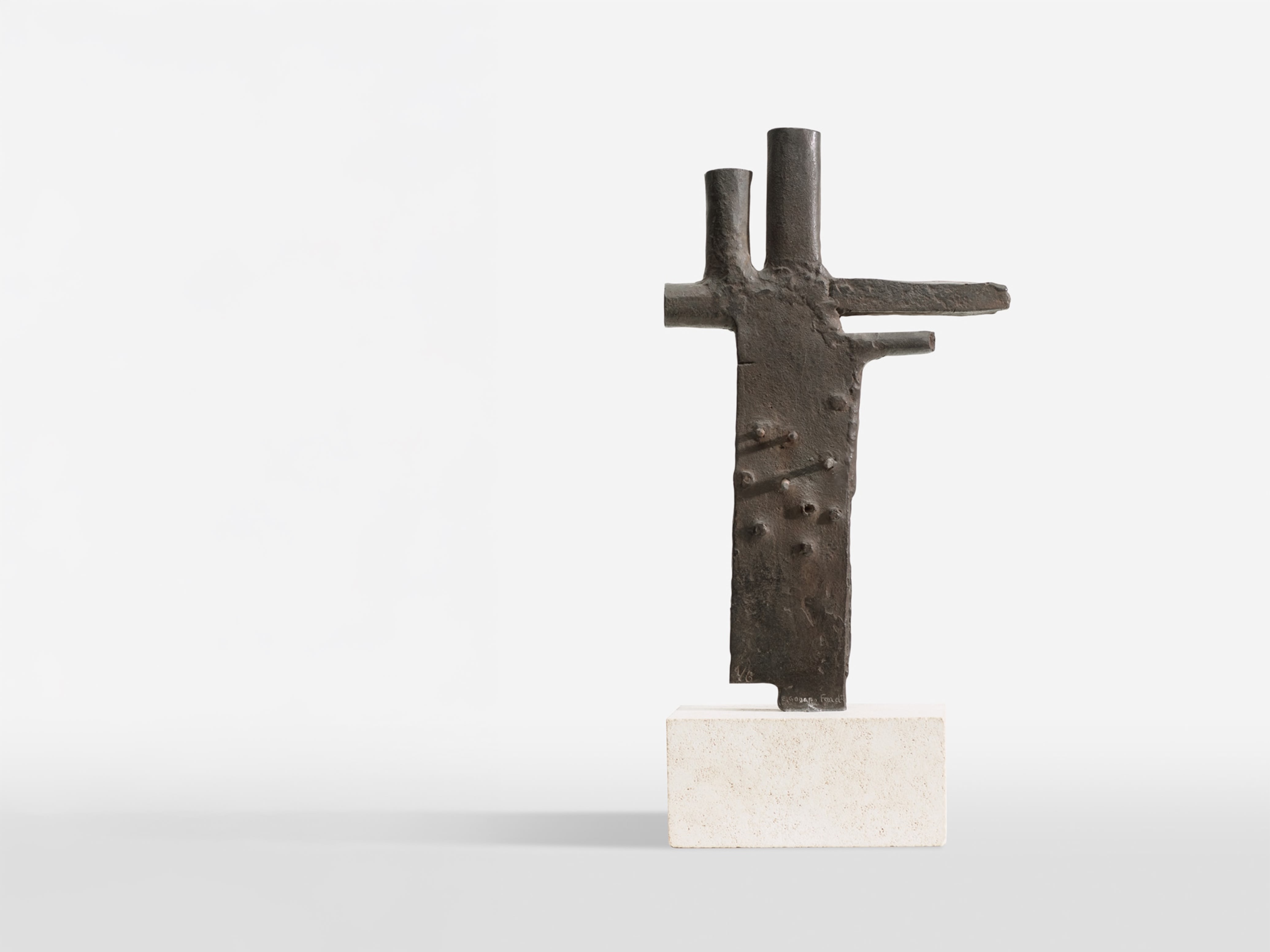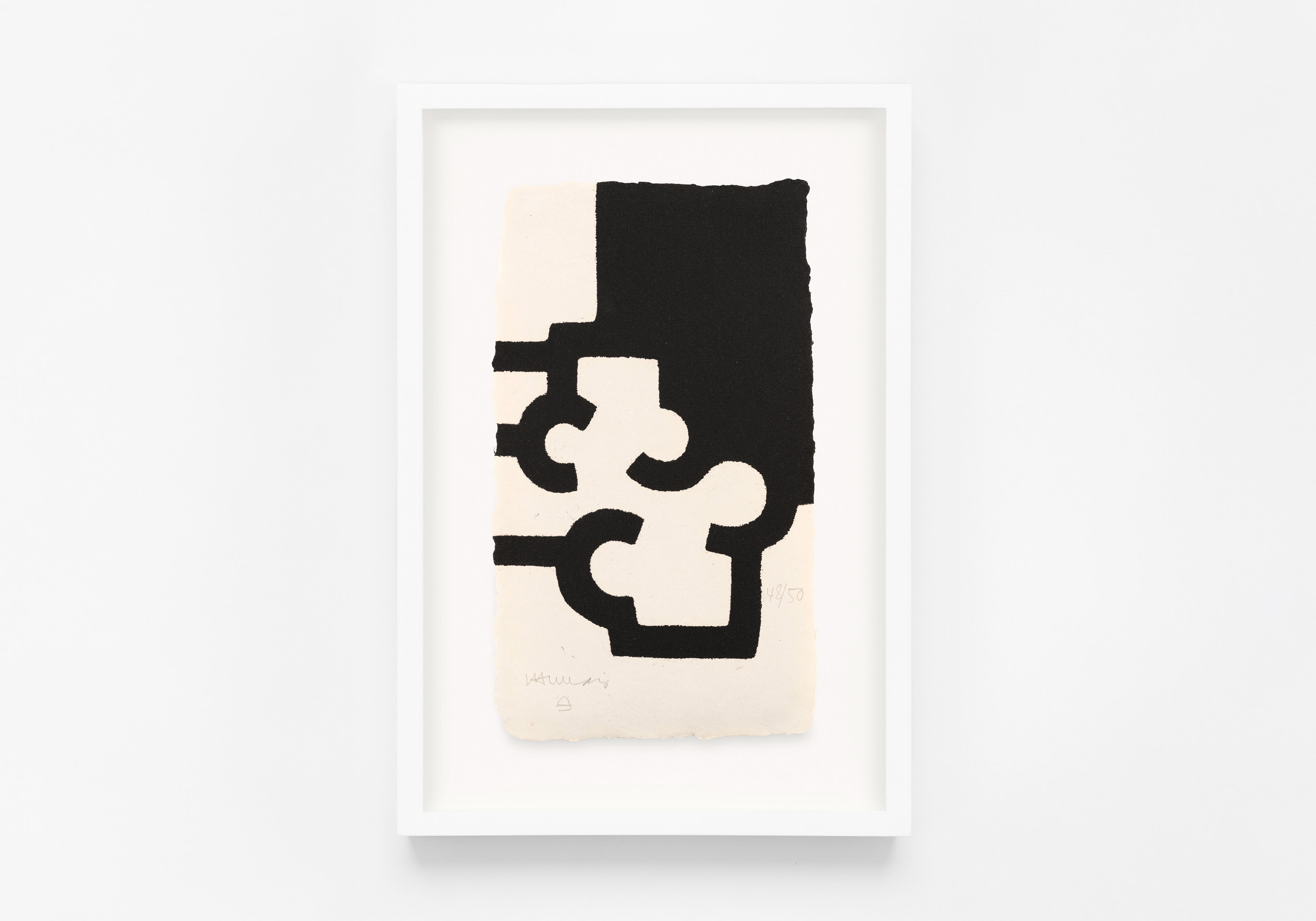
Julio González and Eduardo Chillida stand as two pivotal figures in the evolution of modern sculpture, each reshaping the language of material, space, and form to articulate a new aesthetic for the 20th century. González, born in Barcelona in 1876, pioneered the use of welded iron as a sculptural medium, transforming it from an industrial material into an instrument of lyrical expression. His collaborations with artists like Picasso opened up new avenues for abstraction, allowing metal to convey movement, tension, and emotional depth. Chillida, born nearly half a century later in 1924, emerged as a leading postwar artist whose profound sensitivity to structure and space mirrored González’s explorations. With a background in architecture, Chillida transformed materials like steel, stone, and alabaster into vessels for philosophical reflection, creating forms that invite viewers to ponder existence itself. Though separated by time, their artistic paths intersected conceptually, with each artist extending the other's legacy in an ongoing dialogue about the boundaries—and possibilities—of sculpture.
The convergence of González and Chillida’s artistic journeys presents a compelling narrative within the broader story of modern sculpture. González’s career reached its zenith in the 1930s, while Chillida’s work flourished from the 1950s onward. Nevertheless, their shared focus on the expressive potential of form, material, and void forges a connection that transcends eras. González’s welded iron structures explored the emotive power of metal, treating it as a lyrical medium capable of embodying human tensions. Chillida, in turn, extended this inquiry, grounding his works in the natural world and expanding on the profound voids that defined González’s introspective vision. Together, these two artists’ paths form a continuous line across time, united by their commitment to an art that reaches beyond the visible and into the depths of human experience.

Julio González. Main aux piquants, 1937. Bronze cast with iron nails on stone base.
González’s Main debout and Main aux piquants, both created in the late 1930s, exemplify his mature approach to abstraction through metal—a material he handled with remarkable sensitivity to texture and rhythm. These works have an organic, rugged quality, with protruding forms and sharp lines that evoke gestures hovering between solidity and motion. The hand-like shapes are ambiguously human, bridging the personal and the universal. This focus on suggestion rather than representation resonates with Chillida’s approach decades later. In the etching Batz (1984), Chillida also relies on minimalism and stark contrast, using deep blacks and the negative space of white paper to create forms that float between presence and absence. These intersecting visual languages capture a shared fascination with the primal interplay of weight, line, and space.
Both González and Chillida explore the void as an expressive element, though their approaches differ across medium and time. Chillida’s small-scale etchings, such as Begiari (1989) and Omar Khayyam Txiki (1982), harness the depth of negative space, allowing the empty paper to resonate as powerfully as the inked forms. This treatment of space reveals a fascination with spatial dialogue, a concept González had pioneered in his sculptures decades earlier. In Main couchée (1937), González shapes metal into a form that draws viewers into its silent core, carving voids within the dense material to create a sense of breathing space within the solid. Both artists invite viewers to engage with the spaces within and around their works, transforming voids into active, contemplative elements. It is through this shared exploration of emptiness and form that their paths most profoundly intersect.
González’s treatment of metal, with its raw textures and earthy patina, contrasts with the clean, graphic quality of Chillida’s etchings, yet both artists explore a similar aesthetic of interlocking forms and spatial tension. Chillida’s Omar Khayyam Txiki presents an architectural structure of interlocking shapes, isolated by fields of empty space—a spatial harmony that parallels González’s rugged, monumental works. Each artist, through their chosen medium, contemplates the boundaries between the tangible and intangible, inviting viewers to sense the thresholds between form and formlessness, material and void. In this way, their creative paths converge in a shared pursuit of balance, transcendence, and the poetic potential of space.

Eduardo Chillida. Omar Khayyam Txiki, 1982. Softground etching on Segundo Santos paper.
Despite their differences in material and technique, González and Chillida each achieve a delicate equilibrium between weight and lightness. González’s metal sculptures may appear grounded and solid, yet they evoke movement and tension, as if poised to expand beyond their physical form. Chillida’s etched shapes, though visually lighter, carry a philosophical weight, drawing viewers into the spaces between black and white. This balance between density and openness connects their work across time, underscoring a shared commitment to exploring the metaphysical within the material. Through this interplay, González and Chillida reveal a vision of sculpture as something both material and transcendent—a place where form and emptiness converse across time.
In their distinct yet converging paths, González and Chillida expanded the expressive possibilities of modern art, each inviting space to play an active role within their work. Through their exploration of form and void, they created a unique fusion of presence and absence, weight and air. This poetic dialogue—a resonance that continues to captivate—reminds us of art’s power to transcend both time and material. González and Chillida’s paths, though separated by decades, cross in a timeless conversation that reaches into the depths of human experience, inviting us to engage with forms that are as elemental as they are evocative. Their legacies intertwine, each artist contributing to a continuum that invites viewers to witness the silent, powerful spaces within and around each sculptural form.



